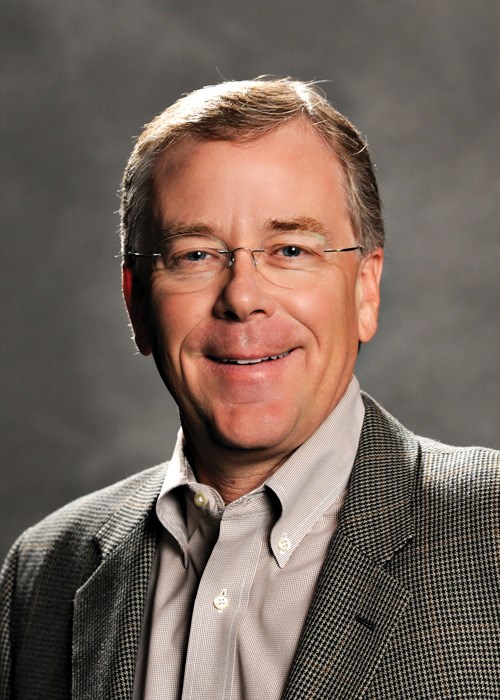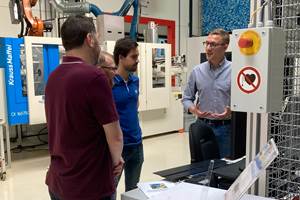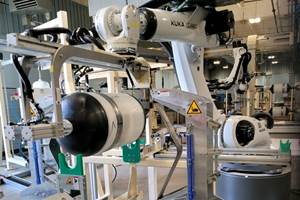Technical integrators: Driving change in advanced composites
CW's conference director Scot Stephenson asks: Where and how is the composites industry as a whole growing, maturing and evolving? Consultant Steve Speak, president of Steve Speak Coaching and Consulting (Scottsdale, Ariz.), provided an answer at the recent Composites Investment Forum, Oct 17-18, 2011, in Ft. Worth, Texas.
As advanced composites professionals, we are sometimes so easily consumed by the day-by-day minutiae of our work responsibilities that we don’t have — or won’t take — time to step back and conduct a big-picture assessment. How often do we ask, Where and how is the composites industry as a whole growing, maturing and evolving? It’s helpful, then, when someone does this for us.
Steve Speak, president of Steve Speak Coaching and Consulting (Scottsdale, Ariz.) and former President of Cytec’s Engineered Materials business unit (Scottsdale, Ariz.), took on that task recently when he spoke at the CompositesWorld Composites Investment Forum, held Oct. 17-18 in Fort Worth, Texas. He’s accustomed to taking a global view of things, and he provided attendees with a high-altitude perspective on the composites industry’s present and near-term future via a presentation titled “The Effect of Technology and Market Acceptance on the Future Advanced Materials Market.”
Speak started with three basic questions: What are the forces driving industry change over the next five years? How will these forces change the business and technology landscape and why? How will your business capitalize on these changes? This was followed by a review of the current composites-industry value chain, with emphasis on the fact that most value in this chain is created among higher-level converters (e.g., prepreggers), part producers that possess their own materials science capabilities, and OEMs/end-users.
He observed that for the past 20-plus years, the advanced composites industry has been “pulled” along by the aerospace and defense markets, which set performance standards for carbon and other advanced fibers and high-performance resins use and drove the expanded use of composites in their businesses. However, Speak sees this relationship changing. He suggested that the “ship has pretty much sailed” on the big aerospace and defense programs for the next decade. Today, the high-dollar composites programs — Boeing’s 787, the Airbus A350 XWB and A400M, Lockheed Martin’s F-35 Joint Strike Fighter and Sikorsky’s CH53-K helicopter — have established supply chains “owned” by established material suppliers and parts manufacturers. Given the high cost of entry to these programs after baselines are set, the few comparable big projects on the horizon, and the looming U.S. budget deficits that will lead to reduced aerospace and defense funding, Speak said the driving force for future advanced composites applications will shift to markets outside the aerospace industry.
Opportunities outside of aerospace are increasing for a number of reasons. It is pretty clear that legacy materials (read: metals) are increasingly unable to meet emerging performance requirements. The strength-to-weight advantages inherent in high-performance composites can provide a way to meet these challenges, but in markets outside the aerospace realm, cost is a much larger hurdle, particularly for manufacturers trying to close a business case to make the leap to a new and different material technology.
The challenge, said Speak, is that solution providers for these emerging applications must bridge the gap between the value proposition of today’s aerospace composites and a new “right performance/affordable cost” value proposition that will open the door for advanced composites in nonaerospace applications. This will require design and component integration on a scale that is relatively rare in an industry that, outside the aerospace community, is dominated by a large number of relatively small composites processors. Thus, said Speak, a certain amount of scaling up is necessary if these smaller processors are to have access to the resources they’ll need to cost-effectively develop the right advanced composite products for nonaerospace applications.
All of these changes and evolving market forces are leading to the development of what Speak thinks will be a new link in the composites industry supply chain — a new business type, really — which he calls the technology integrator. This new business model will unite design, materials science (including fiber, resin, product form and processing), application engineering, manufacturing and technical support. Such an integrator — a rarity, today — will help drive the adoption of composites into, and make the perceived novelty of these “new” materials more palatable to, emerging customers in energy, automotive and infrastructure markets.
Speak acknowledged, however, that becoming a true integrator is easier said than done. A company that chooses this path must identify its skill and competency gaps (vs. the new model) and quickly fill these capability gaps through internal skill additions, external partnerships and/or joint ventures or even strategic M&A projects. Financial markets are generally keen to invest in composites firms that have the right mix of expertise and knowledge, so the opportunity for expansion is ripe, said Speak. Creative leaders who understand this new model, he said, are well positioned to help nonaerospace customers make the leap from their legacy technology to the high value proposition offered by composites. And as always, those who move today will be in the best position take advantage of this fast-changing market.
Related Content
Materials & Processes: Fabrication methods
There are numerous methods for fabricating composite components. Selection of a method for a particular part, therefore, will depend on the materials, the part design and end-use or application. Here's a guide to selection.
Read MoreTPRC training courses target thermoplastic composites
Three upcoming in-person thermoplastic composites courses, ranging from entry-level to advanced, are organized to enhance composites professionals’ knowledge in this burgeoning field.
Read MoreASCEND program update: Designing next-gen, high-rate auto and aerospace composites
GKN Aerospace, McLaren Automotive and U.K.-based partners share goals and progress aiming at high-rate, Industry 4.0-enabled, sustainable materials and processes.
Read MoreAutomated filament winding system increases throughput, reduces manual labor for pressurized well tank production
For its new line of composite well water tanks, Amtrol worked with Roth Composite Machinery on an automated process for faster, more easily tracked production.
Read MoreRead Next
CW’s 2024 Top Shops survey offers new approach to benchmarking
Respondents that complete the survey by April 30, 2024, have the chance to be recognized as an honoree.
Read MoreFrom the CW Archives: The tale of the thermoplastic cryotank
In 2006, guest columnist Bob Hartunian related the story of his efforts two decades prior, while at McDonnell Douglas, to develop a thermoplastic composite crytank for hydrogen storage. He learned a lot of lessons.
Read MoreComposites end markets: Energy (2024)
Composites are used widely in oil/gas, wind and other renewable energy applications. Despite market challenges, growth potential and innovation for composites continue.
Read More













.jpg;maxWidth=300;quality=90)










